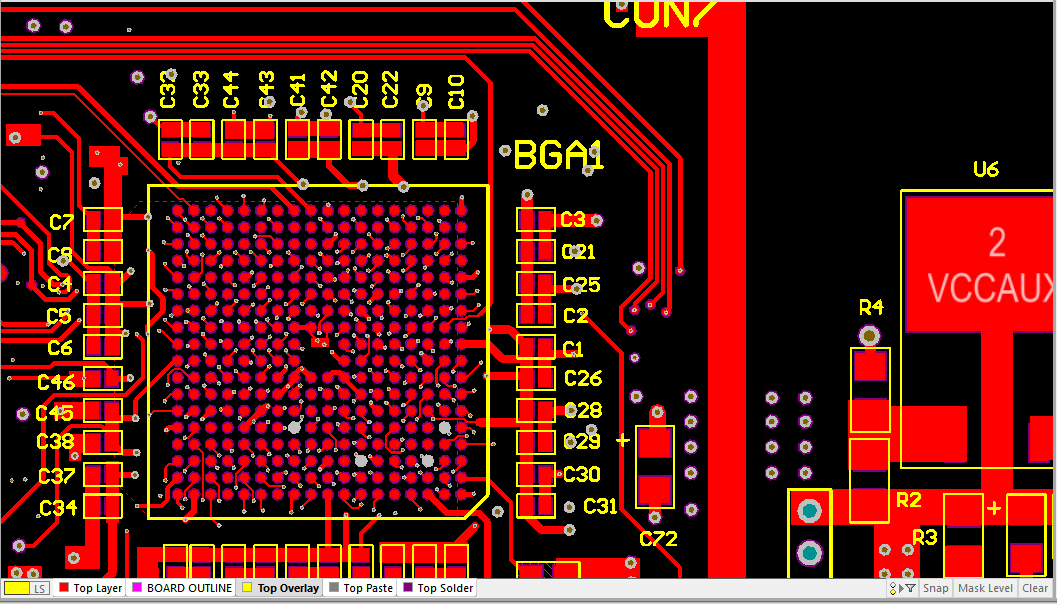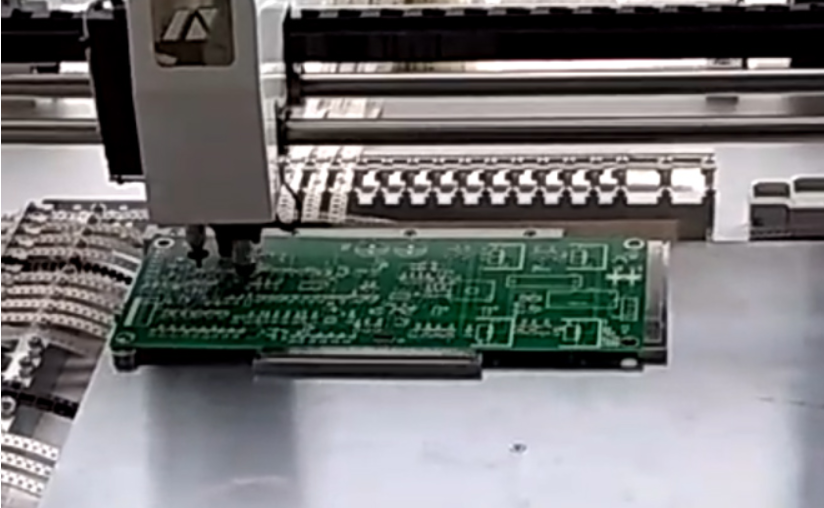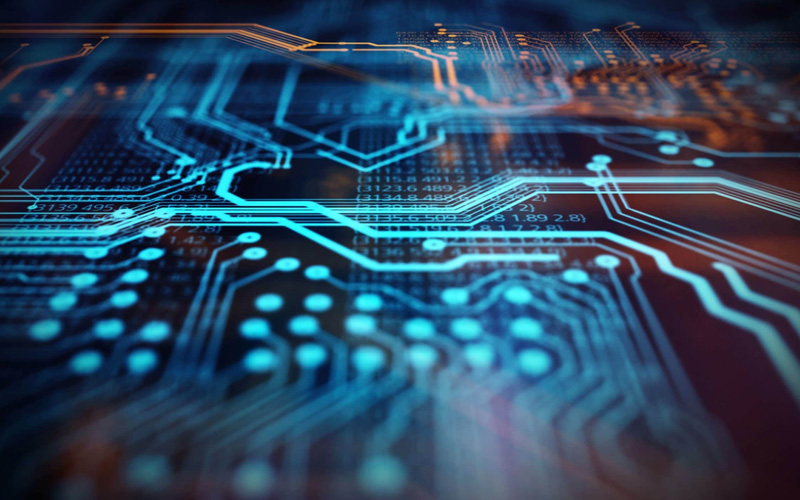
Most complete PCB circuit design inspection items
After the electronic engineer has designed the PCB, he needs to comprehensively check the rationality of the design. The following checklist includes all aspects related to the design cycle, and other items shall be added for special applications.
General PCB design drawing inspection items

1) Have you analyzed the circuit? Is the signal circuit divided into basic units for smoothing?
2) Is it allowed to use short or isolated key leads in the circuit?
3) Are the areas that must be shielded effectively?
4) Has the basic grid graphics been fully utilized?
5) Is the size of the printed circuit board the optimal size?
6) Do you want to use the selected wire width and spacing as much as possible?
7) Are the preferred pad sizes and hole sizes used?
8) Are photographic plates and sketches suitable?
9) Are the minimum jumpers used? Do jumpers go through components and accessories?
L0) Is the letter visible after assembly? Is the size and model correct?
11) Have large areas of copper foil been opened to prevent blistering?
12) Is there a tool locating hole?
PCB electrical characteristics inspection items
1) Whether the influence of conductor resistance, inductance and capacitance is analyzed? Especially for the critical voltage drop phase grounding?
2) Whether the spacing and shape of wire accessories meet the insulation requirements?
3) Are insulation resistance values controlled and specified at key points?
4) Are polarities adequately identified?
5) Has the influence of wire spacing on leakage resistance and voltage been measured from the perspective of geometry?
6) Has the medium for changing the surface coating been identified?
PCB physical characteristics inspection items
1) Are all pads and their locations suitable for final assembly?
2) Can the assembled PCB meet the shock and vibration work conditions?
3) What is the spacing between the specified standard elements?
4) Are loosely mounted components or heavier components secured?
5) Is the heat dissipation and cooling of heating elements correct? Or is it isolated from the printed circuit board and other thermal components?
6) Are voltage dividers and other multi lead components positioned correctly?
7) Are elements arranged and oriented for easy inspection?
8) Are all possible interferences on the printed circuit board and the entire printed circuit board assembly eliminated?
9) Is the size of the locating hole correct?
10) Are the tolerances complete and reasonable?
11) Have the physical properties of all coatings been controlled and signed?
12) Is the hole to lead diameter ratio within the acceptable range?
PCB Mechanical Design Factors
Although printed circuit board adopts mechanical method to support components, it cannot be used as a structural member of the whole equipment. A certain amount of text support shall be provided at least every 5 inches at the edge of the printed board.
The following factors must be considered when selecting and designing printed circuit boards:;
1) Structure of printed circuit board - size and shape.
2) Type of mechanical accessories and plugs (sockets) required.
3) Adaptability of the circuit to other circuits and environmental conditions.
4) Consider installing the printed circuit board vertically or horizontally according to some factors, such as heating and dust.
5) Some environmental factors that need special attention, such as heat dissipation, ventilation, impact, vibration and humidity. Dust, salt spray and radiation.
6) The degree of support.
7) Hold and secure.
8) Easy to remove.
Installation requirements for PCB printed circuit board
It shall be supported at least within 1 inch of the three edge edges of the printed circuit board. According to practical experience, the spacing of support points of printed circuit board with thickness of 0.031 - 0.062 inch shall be at least 4 inches; For printed circuit boards with a thickness greater than 0.093 inch, the spacing between their supporting points shall be at least 5 inches. This measure can improve the rigidity of the printed circuit board and destroy the possible resonance of the printed circuit board.
The installation technology of certain printed circuit boards can be determined after considering the following factors.
1) Dimensions and shapes of printed circuit boards.
2) Number of input and output terminals.
3) Available equipment space.
4) Desired handling convenience.
5) The type of attachment to be installed.
6) Required heat dissipation.
7) Shieldability required.
8) The type of circuit and its relationship with other circuits.
Pull out requirements of printed circuit board
1) The area of the printed circuit board that does not require components to be installed.
2) The influence of plugging tools on the installation distance between two printed circuit boards.
3) The mounting holes and slots shall be specially prepared in the design of printed circuit boards.
4) When inserting and pulling tools are to be used in the equipment, especially its size shall be considered.
5) A plug and pull device is required, which is usually permanently fixed to the printed circuit board assembly with rivets.
6) In the mounting frame of printed circuit board, special design such as load bearing flange is required.
7) Adaptability of the used plug and pull tools to the size, shape and thickness of the printed circuit board.
8) The cost involved in using the plug and pull tool includes both the price of the tool and the increased expenditure.
9) In order to fasten and use the plug and pull tools, it is required to enter the equipment to a certain extent.
PCB mechanical considerations
The characteristics of the substrate that have an important impact on the printed circuit assembly are: water absorption, thermal expansion coefficient, heat resistance, flexural strength, impact strength, tensile strength, shear strength and hardness. All these characteristics not only affect the function of PCB structure, but also affect the productivity of PCB structure.
For most applications, the dielectric substrate of printed circuit board is one of the following substrates:
1) Phenolic impregnated paper.
2) Acrylic acid polyester impregnated glass felt with irregular arrangement.
3) Epoxy impregnated paper.
4) Epoxy impregnated glass cloth.
Each substrate can be flame retardant or combustible. The above 1, 2 and 3 can be punched. The most commonly used material of metallized hole printed circuit board is epoxy glass cloth. Its dimensional stability is suitable for high-density circuits, and it can minimize the occurrence of cracks in metallized holes.
One disadvantage of epoxy glass cloth laminate is that it is difficult to punch within the common thickness range of printed circuit board. For this reason, all holes are usually drilled out, and profiling milling is used to form the shape of printed circuit board.
PCB electrical considerations
In DC or low-frequency AC occasions, the most important electrical characteristics of insulation substrate are insulation resistance, electrical isolation, printed wire resistance and breakdown strength.
In high-frequency and microwave applications, it is dielectric constant, capacitance and dissipation factors.
In all applications, the current load capacity of printed wire is important.
PCB wiring path and positioning
The printed wire shall follow the shortest route between components under the restriction of specified wiring rules. The coupling between parallel conductors shall be limited as far as possible. Good design requires the minimum number of layers for wiring, and the widest wire and the largest pad size are also required to be used under the corresponding packaging density. Because rounded corners and smooth inner corners may avoid some electrical and mechanical problems, sharp corners and sharp corners in wires should be avoided.
PCB width and thickness
Current carrying capacity of copper conductor etched on rigid printed circuit board. For 1 oz and 2 oz conductors, 10% of the nominal value (in load ammeter) is allowed to be reduced, taking into account the etching method, normal changes in copper foil thickness and temperature difference; For printed circuit board assemblies coated with protective layer (substrate thickness less than 0.032 inch, copper foil thickness more than 3 ounces), the components are reduced by 15%; For the soldered printed circuit board, 30% reduction is allowed
PCB wire spacing
The minimum spacing of conductors must be determined to eliminate voltage breakdown or flashover between adjacent conductors. The spacing is variable and depends on the following factors:
1) Peak voltage between adjacent conductors.
2) Atmospheric pressure (maximum working height).
3) Coating used.
4) Capacitive coupling parameters.
The key impedance components or high-frequency components are generally placed very close to reduce the key stage delay. The transformer and inductive element shall be isolated to prevent coupling; Inductive signal conductors shall be arranged at right angles; Components that will generate any electrical noise due to magnetic field movement shall be isolated or rigidly mounted to prevent excessive vibration.
PCB wire pattern check
1) Is the wire short and straight without sacrificing function?
2) Are the wire width limits observed?
3) Is the minimum conductor spacing that must be guaranteed reserved between conductors, between conductors and mounting holes, between conductors and bonding pads?
4) Are parallel runs of all wires (including component leads) closer together avoided?
5) Is acute angle (90 ℃ or less) avoided in wire drawing?
PCB design item check list
1. Check the rationality and correctness of the schematic diagram;
2. Check the correctness of component packaging of schematic diagram;
3. Spacing between strong and weak current, and spacing between isolated areas;
4. Check the corresponding schematic diagram and PCB diagram to prevent the loss of network table;
5. Whether the package of components is consistent with the real object;
6. Whether the placement of components is appropriate:
A. Whether the elements are easy to install and disassemble;
B. Whether the temperature sensing element is too close to the heating element;
C. Whether the distance and direction of mutual inductance components are appropriate;
D. Whether the connectors are placed smoothly;
E. Easy to plug and unplug;
F. Input and output;
G. Strong current and weak current;
H. Whether digital and analog are interlaced;
1. Arrangement of upwind and downwind components;
7. Whether the directional element is wrongly turned instead of rotated;
8. Whether the installation hole of element pin is suitable and easy to insert;
9. Check whether the empty pin of each element is normal and whether there is leakage;
10. Check whether there are vias in the upper and lower layers of the same network table, and the bonding pads are connected through the holes to prevent wire breakage and ensure the integrity of the lines;
11. Check whether the upper and lower characters are placed correctly and reasonably, and do not put components to cover the characters, so as to facilitate the operation of welding or maintenance personnel;
12. The connection of the very important upper and lower layers of wires should not only be connected by the pad of directly inserted components, but also by via;
13. The arrangement of power supply and signal line in the socket shall ensure the integrity and anti-interference of the signal;
14. Pay attention to the proper proportion of pads and holes;
15. All plugs shall be placed on the edge of PCB board as far as possible and easy to operate;
16. Check whether the component label is consistent with the component, and all components should be placed in the same direction and orderly as far as possible;
17. The power supply and ground wire shall be thickened as much as possible without violating the design rules;
18. In general, the upper layer shall follow the horizontal line, and the lower layer shall follow the vertical line, and the chamfer shall not be less than 90 degrees;
19. Whether the size and distribution of the mounting holes on the PCB are appropriate, and minimize the bending stress of the PCB;
20. Pay attention to the high and low distribution of components on PCB and the shape and size of PCB to ensure convenient assembly;









